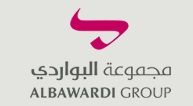Global Inorganic Scintillators Market - Analysis, Trends & Forecasts to 2021 - Research and Markets
The "Global Inorganic Scintillators Market 2017-2021" report has been added to Research and Markets' offering.
The global inorganic scintillators market is expected to grow at a CAGR of 5.6% during the period 2017-2021.
The report, Global Inorganic Scintillators Market 2017-2021, has been prepared based on an in-depth market analysis with inputs from industry experts. The report covers the market landscape and its growth prospects over the coming years. The report also includes a discussion of the key vendors operating in this market.
The latest trend gaining momentum in the market is the increased R&D investments and material innovations. Many local and international vendors manufacture inorganic scintillators for radiation detection applications. Vendors compete based on product development, innovations, R&D investments, material innovations, and expansions. Innovations by major players in the market have led to the manufacture of scintillators doped with activators such as sodium and thallium.
According to the report, one of the major drivers for this market is the excellent physical properties of inorganic scintillators. Inorganic scintillators are widely used in many applications such as homeland security systems, healthcare applications, nuclear power plants, and industrial applications. The extensive use of inorganic scintillators for radiation detection applications is mainly because of their excellent properties and differential features.
Key vendors
- Dynasil
- Hamamatsu Photonics
- Hitachi
- Saint-Gobain
- Toshiba Materials
Other prominent vendors
- Argus Imaging
- Amcrys
- Carestream Health
- Rexon Components
- Scintacor
- Thermo Fisher Scientific
- Zecotek Photonics
-
Others
Key Topics Covered:
Part 01: Executive Summary
Part 02: Scope Of The Report
Part 03: Research Methodology
Part 04: Introduction
Part 05: Market Landscape
Part 06: Market Sizing
Part 07: Five Forces Analysis
Part 08: Market Segmentation By Material
Part 09: Customer Landscape
Part 10: Regional Landscape
Part 11: Decision Framework
Part 12: Drivers And Challenges
Part 13: Market Trends
Part 14: Vendor Landscape
Part 15: Vendor Analysis
For more information about this report visit https://www.researchandmarkets.com/research/7f9kcd/global_inorganic
View source version on businesswire.com: http://www.businesswire.com/news/home/20171205005776/en/



